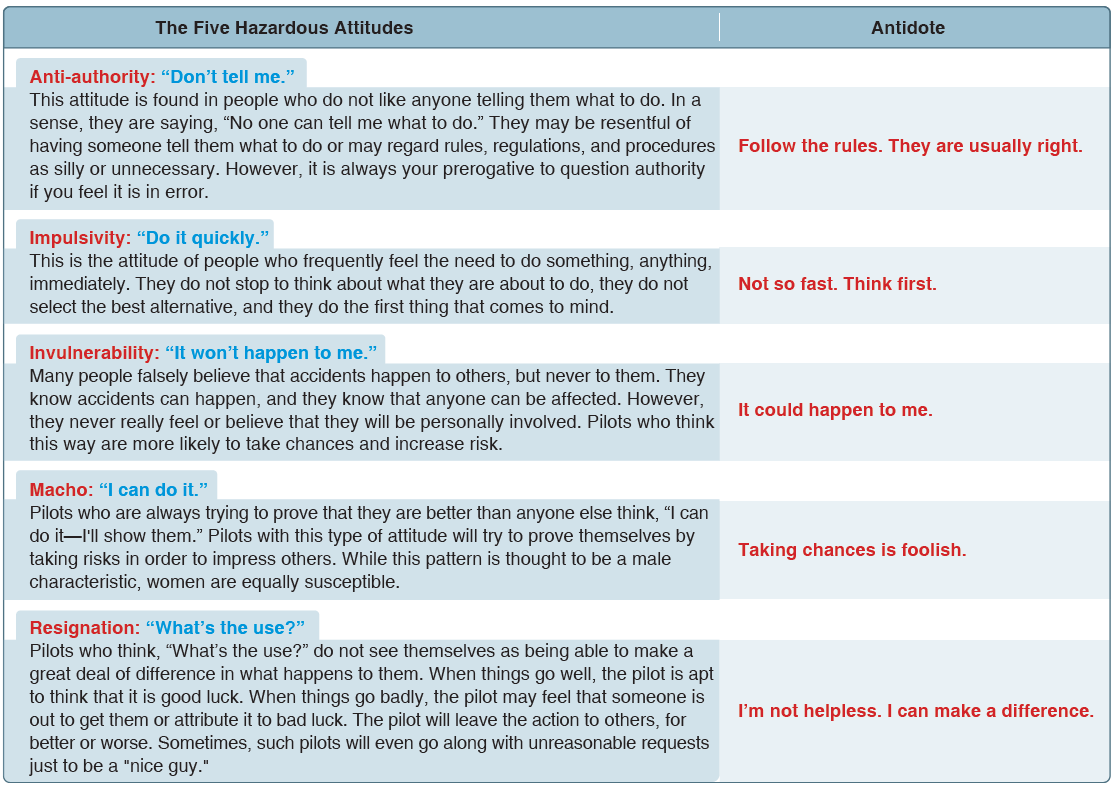Am I fit to fly? I like to think of myself as pretty fit, I hit the gym 3 or 4 times a week, eat healthy (most of the time), I even ran the Runway 5K this year at AirVenture in Oshkosh and absolutely crushed it! Ok, maybe I didn’t crush it but I did finish without pulling a hamstring. Physically I can say I am fit to fly, but I need to ask myself, does that alone qualify me as “fit to fly”? In truth, no. My physical fitness alone is not the sole qualifier in determining my fitness to operate an aircraft.
When determining fitness the FAA expects you to take additional qualifiers into consideration, a prime example is attitude. A person’s attitude will immensely affect the quality of decisions made by that particular individual. I like to think of this as mental fitness. In FAA handbooks you see attitude described as a motivational predisposition to respond to people, situations, or events in a given manner.
During a student pilots training they learn of five hazardous attitudes which have been identified through several studies: anti-authority, impulsivity, invulnerability, macho, and resignation. Each one of these hazardous attitudes is a detriment to a pilot’s ability to make sound decision and appropriately exercise authority. Part of maintaining a high-level of mental fitness is the ability for a pilot to recognize each one of these hazardous attitudes and then employ the corresponding antidote. The table below shows and explains each hazardous attitude and then provides corresponding antidote, click to enlarge.
Once a pilot makes an aeronautical decision, part of the process is quickly running through that decision to verify that it has not been influenced by a hazardous attitude. This is just a small part of the bigger picture known as the aeronautical decision making (ADM) process.
ADM is a systematic approach to the mental process used by pilots to consistently determine the best course of action in response to a given set of circumstances. You can find out more about the ADM process in chapter 2 of the Pilots Handbook of Aeronautical Knowledge.
Check out some of these FAA test questions on hazardous attitudes, I’ll post the answers on Friday afternoon!
1. Hazardous attitudes occur to every pilot to some degree at some time. What are some of these hazardous attitudes?
A—Poor risk management and lack of stress management.
B—Antiauthority, impulsivity, macho, resignation, and invulnerability.
C—Poor situational awareness, snap judgments, and lack of a decision making process.
2. In the aeronautical decision making (ADM) process, what is the first step in neutralizing a hazardous attitude?
A—Making a rational judgement.
B—Recognizing hazardous thoughts.
C—Recognizing the invulnerability of the situation.
3. What antidotal phrase can help reverse the hazardous attitude of “antiauthority”?
A—Rules do not apply in this situation.
B—I know what I am doing.
C—Follow the rules.
4. What antidotal phrase can help reverse the hazardous attitude of “macho”?
A—I can do it.
B—Taking chances is foolish.
C—Nothing will happen.






